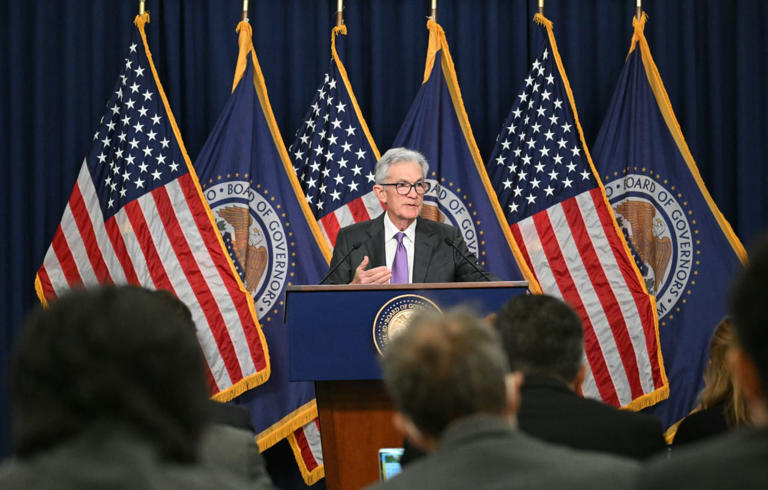Following the Federal Reserve’s decision to maintain interest rates unchanged, Fed Chair Jerome Powell emphasized the central bank’s commitment to ensuring a substantial decrease in inflation before considering any interest rate cuts. However, there appears to be a gradual shift in officials’ economic growth and interest rate projections, hinting at the possibility of tighter Fed policy in the future.
Powell expressed uncertainty about whether interest rates would return to the historically low levels witnessed in the 2010s. This sentiment was echoed in the Fed’s quarterly Summary of Economic Projections (SEP), which revealed unchanged interest rate forecasts for 2024 compared to December. However, projections for subsequent years indicated potential increases in interest rates, suggesting a slower decline from the recent peak interest rates in the U.S.
The “dot plot,” which illustrates officials’ forecasts for various economic indicators, including interest rates, depicted higher median estimates for the federal-funds rate target range at the end of 2025 and 2026, as well as in the longer run. This adjustment implies a more gradual descent from the recent peak interest rates.
Specifically, the median estimate for the fed-funds rate target at the end of 2025 increased to a range of 3.75% to 4%, while for the end of 2026, it showed a target range of 3% to 3.25%. Furthermore, officials’ median longer-run estimate also moved up by a quarter point to 2.5% to 2.75%, indicating a shift in the perceived neutral rate of interest in the post-pandemic economy.
With seven out of 18 estimates for the longer-run fed-funds rate at 3.0% or above, any further adjustments could lead to an increase in the median estimate in the next SEP release in June. Overall, these developments suggest a potential tightening of Fed policy in the years ahead as economic conditions evolve.
The market is signaling even higher longer-run interest rates compared to the Federal Reserve’s projections. The five-year, five-year forward swap rate, which serves as an indicator of where interest rates may be in five years, suggests a nominal neutral rate of approximately 4.25%, according to data from the Federal Reserve Bank of St. Louis. This figure significantly surpasses the 2.6% midpoint indicated in the March dot plot released by the Fed.
Charlie Ripley, senior investment strategist for Allianz Investment Management, highlighted the disparity between market expectations and the Fed’s long-term policy rate forecast. He noted that while the market quickly adjusted its expectations for Fed policy in the near term, there remains a significant gap between market projections and the Fed’s estimates for the terminal rate.
Jake Schurmeier, a portfolio manager at Harbor Capital Advisors, anticipates the eventual interest rate landing somewhere between the latest dot plot’s estimate and market pricing. However, he acknowledged the uncertainty surrounding this projection and the Fed officials’ reluctance to make definitive forecasts for the longer-run fed-funds rate.
Despite expectations for interest rates to decline in 2024 and 2025, the trajectory of the rate-cutting cycle is expected to be less aggressive than currently anticipated by Fed officials. Rates are unlikely to return to the historically low levels observed in the 2010s. As a result, it is conceivable that the Fed’s longer-run rate projections will continue to trend higher in the future.
